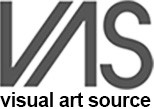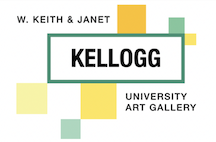Mathematics, geometry, technology, graphic design, color theory, art, history, philosophy, spirituality, harmony, balance, transcendence… these are just a few words that not only describe, but symbiotically function in unison to define the artwork of Joan Kahn. Upon first approaching her body of work, what comes to mind are the logical art historical connections to Barnett Newman's color field paintings, and the harmoniously balanced abstraction of De Stijl. But it is Kahn's application of pigment to the surface of carefully-selected, lusciously-exposed woodgrain that makes her work distinctive and provocative. The combined use of 'the organic' with 'the graphic' creates visual illusions that bemuse the eye and raise questions of how the effects of color, texture, and transparency, affect optical dimensionality. The mind transcends what the eye cannot.
The Cal Poly Pomona campus community welcomes Joan Kahn, and her stunning body of work produced over the span of the last fifteen years, to the W. Keith and Janet Kellogg University Art Gallery. On behalf of the University, its staff, faculty and student body, we recognize her for her unwavering dedication to her craft, and her insightful artwork conveyed through this thought provoking exhibition and recorded through a scholarly catalog titled Joan Kahn, A Fifteen-Year Survey, Paintings 2000-2014 with an essay by art historian and critic Betty Ann Brown.
Michele Cairella Fillmore
Gallery Director/Curator
Artist's Statement
In my painting, I create illusionistic space through the use of object-field relationships, and surfaces and textures are developed through the use of different paints and varnishes, and addition of such substances as sand, pearl essence and dry pigments. Through my use of found natural materials such as wood and sand, and my continual investigation of proportions, I am aligned to the concerns and sensibilities of European and American modernist designers, artists and architects of the 1920s and 30s. I am primarily concerned with geometric orthogonal divisions of space and the ways in which color and texture hold that space to create a sense of luminance. I use surface, texture, and color to make areas lighter or heavier, formally and emotionally. In these ways, I am a Neo-Modern Formalist. Since my days as a graduate student, geometric shapes and their formal and spiritual meanings have been my chosen subject matter.
I explore the dichotomy of 'painting as window' and 'painting as thing': thus the coexistence of illusionistic deep space with the physical presence of differentiated surfaces and textures. Transparent varnish over raw wood emphasizes areas of beautiful evocative shapes hidden within the wood grain. These organic shapes are often areas of focus to which my geometric grids respond. I frequently name the paintings after the associations the wood grain shapes suggest to me. Referencing my memory of specific places, things, people, events and emotions is important as a strategy in the process of inventing the geometric grids.
Currently, for me the creative process is a collaborative dance of the organic and the geometric. I believe that we humans need to learn about and pay attention to our relation to and with the planet's natural life. Our only hope lies not in continual destruction but in a maintaining respectful attitudes and mindful actions towards Nature. My own relationship with Nature has been vastly revitalizing and the spiritual renewal that I find in making my paintings, akin to my experience of the natural world, hopefully provides a parallel experience to the viewer.
Different places I have lived have influenced me tremendously; chronologically, the intellectual refinement and humor of my upbringing in Princeton, the blue-green calm and strength of nature in Vermont, the cool elegance of Paris, the freedom and experimental spirit of Wisconsin, the earth tone surfaces and aesthetic of Italy, the dark colors and formal moodiness of New York City, and the pastel neon retro-eccentricity of Los Angeles.
Although my work is pared to essential elements, unlike the minimalists of the 1960s, I am interested in creating a sense of emotion, even elation. Some of my paintings are meditative in mood while others are sensual, playful, or wryly humorous. But there is also mystery… I intend to evoke a contemplative state in my viewer, and at the same time create moments of surprise when personal aesthetic values are questioned.
Joan Kahn, Artist
2015






